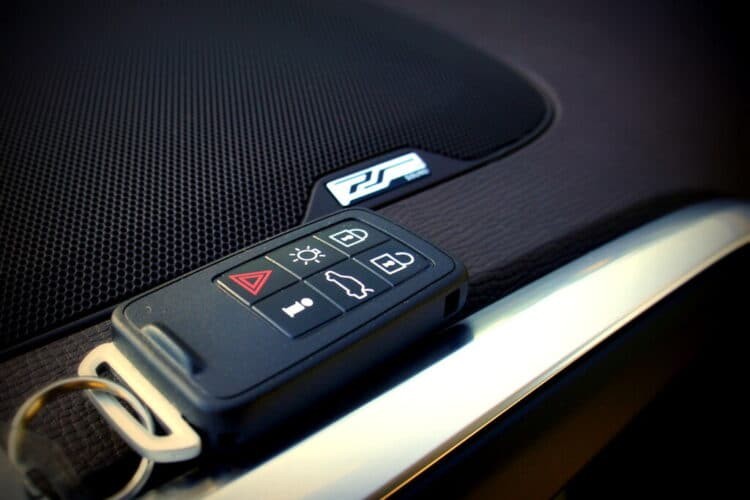Car key fobs, or remote car keys, are essential for modern vehicle convenience, allowing you to lock and unlock doors, activate alarms, open trunks, and even start your car remotely. These electronic devices, while incredibly useful, can sometimes lose their programming due to signal issues or battery changes. Fortunately, in many cases, you can reprogram a replacement car key fob yourself, saving time and money compared to visiting a dealership or auto locksmith. This guide will walk you through the general steps on How To Program A Replacement Car Key Fob, empowering you to regain control quickly and efficiently.
It’s crucial to understand that while the following steps provide a general approach, the precise method for programming a car key fob can vary significantly between car manufacturers and models. Always consult your vehicle’s owner’s manual for the most accurate and specific instructions tailored to your car. You can often find a digital version of your manual on the manufacturer’s website if you don’t have a physical copy.
Here are the general steps involved in programming a car key fob:
Step-by-Step Guide: How to Program Your Car Key Fob
Before starting, make sure you have your replacement car key fob and, if necessary, your original working key. Ensure your car is parked in a safe location where you can perform these steps without interruption.
Step 1: Get Inside Your Car and Close All Doors
Begin by entering your vehicle and sitting in the driver’s seat. Ensure that all doors, including the trunk and hood, are completely closed. This is important because open doors might interfere with the programming process.
Step 2: Turn the Ignition to the ‘On’ Position
Insert your car key into the ignition. Turn the key to the “On” position. This position is usually just before you would crank the engine to start the car. The dashboard lights should illuminate, indicating that the electrical system is active. Do not start the engine. The ‘On’ position provides the necessary power for the key fob programming sequence.
Step 3: Press and Hold the ‘Lock’ Button on the Fob
Take your replacement car key fob and aim it towards the receiver in your car. The receiver’s location can sometimes be found in your owner’s manual, but it is often near the rearview mirror or in the steering column area. Press and hold the “Lock” button on the key fob for a few seconds, typically between 2 to 10 seconds. Some vehicles may require you to press another button in combination with the “Lock” button, so again, refer to your manual if this general step doesn’t work initially.
Step 4: Turn Off the Ignition
Quickly turn the ignition key back to the “Off” position and remove the key from the ignition. The timing for this step can be crucial in some car models, so try to be prompt after pressing the lock button in the previous step. This action signals the car’s computer to finalize the key fob programming sequence.
Step 5: Test the Key Fob
Now, test if the programming was successful. Press the “Lock” or “Unlock” button on your newly programmed key fob. Listen for the car doors to lock and unlock, and check if other functions like the trunk release or panic button are working. If you have multiple key fobs to program, repeat steps 2 through 4 immediately for each additional fob. Many car systems will erase previous key fob programming when a new one is programmed, so reprogramming all fobs at once is usually necessary.
Troubleshooting & Important Considerations
What if the Key Fob Programming Doesn’t Work?
If your key fob doesn’t program correctly on the first try, don’t worry. Here are a few things to check:
- Consult Your User Manual: Double-check the exact steps for your specific car model. There might be variations in timing, button presses, or sequences.
- Battery Check: Ensure the battery in your replacement key fob is new and correctly installed. A weak battery can prevent successful programming.
- Repeat the Process: Try repeating the entire programming sequence a few times. Sometimes, it might take a couple of attempts for the system to register the new key fob.
- Check for a Programming Mode: Some vehicles require entering a specific “programming mode” before a new key fob can be linked. This often involves turning the ignition key on and off a specific number of times in a set pattern. Your owner’s manual will detail this if necessary.
Programming Multiple Key Fobs:
As mentioned earlier, when programming a new key fob, the system might erase previously programmed fobs. Therefore, it’s generally recommended to program all your key fobs (including your original working fobs) in one session to ensure they all function correctly.
When to Call a Professional Auto Locksmith
If you’ve tried these steps and consulted your owner’s manual without success, or if you encounter issues like a malfunctioning ignition or car computer problems, it’s best to seek professional help. A qualified auto locksmith or your car dealership has specialized tools and expertise to diagnose and resolve more complex key fob programming issues. They can also handle situations where you don’t have an original working key or if the replacement key fob is not compatible with your car.
Conclusion
Programming a replacement car key fob can often be a straightforward process you can handle yourself. By following these general steps and, most importantly, consulting your vehicle’s owner’s manual for specific instructions, you can save time and money. However, remember that car key systems can be complex, and sometimes professional assistance from an auto locksmith or dealership is necessary to ensure your car security and remote access are properly restored.
